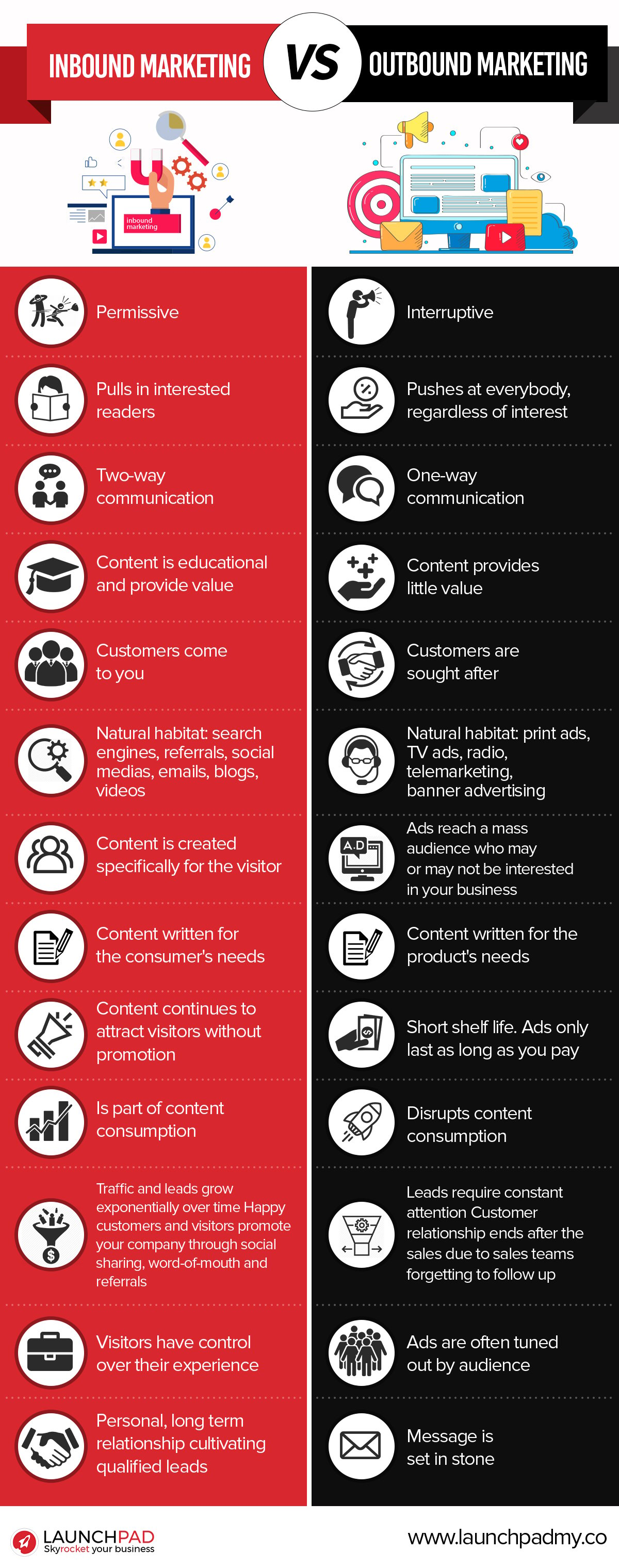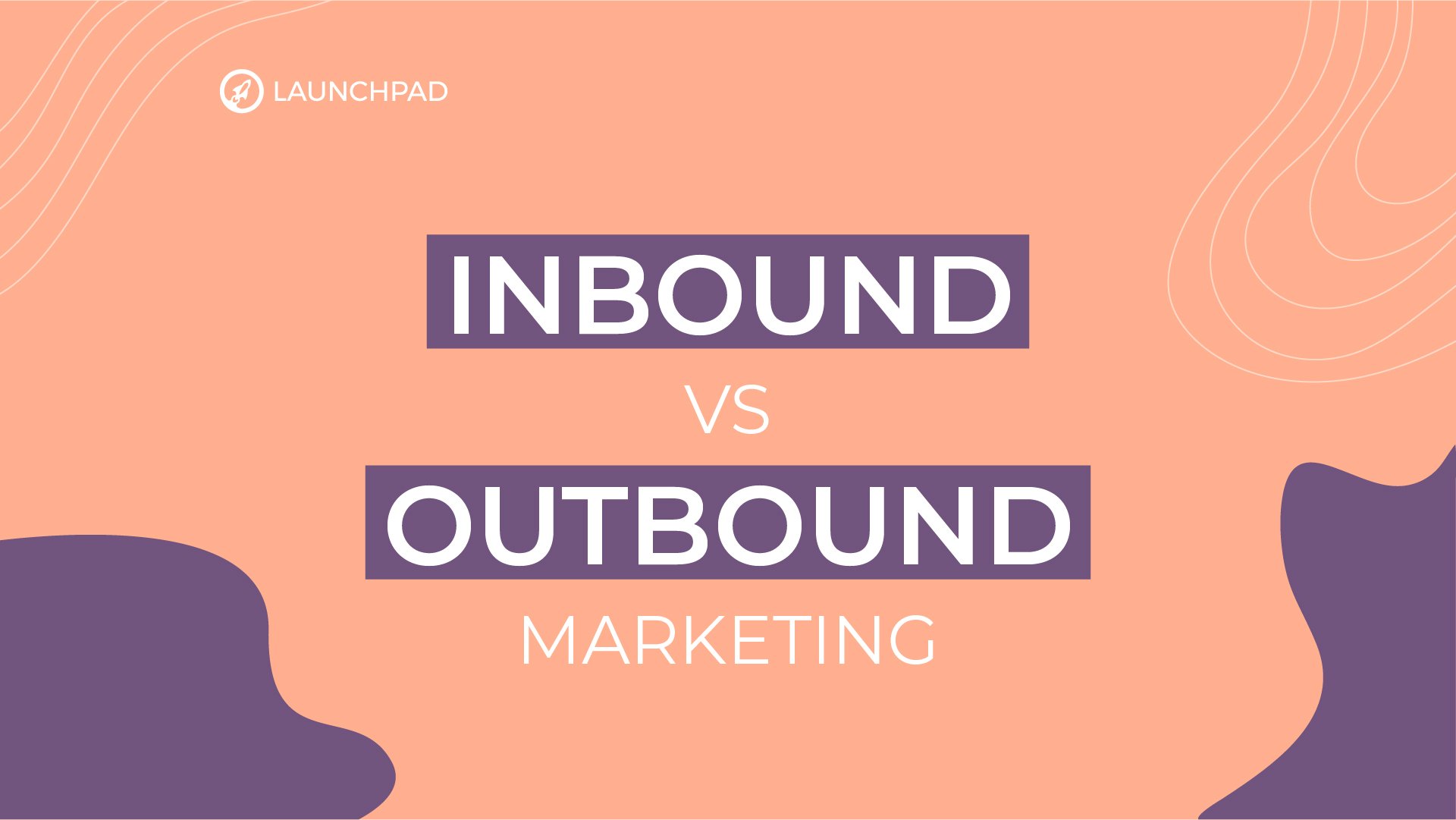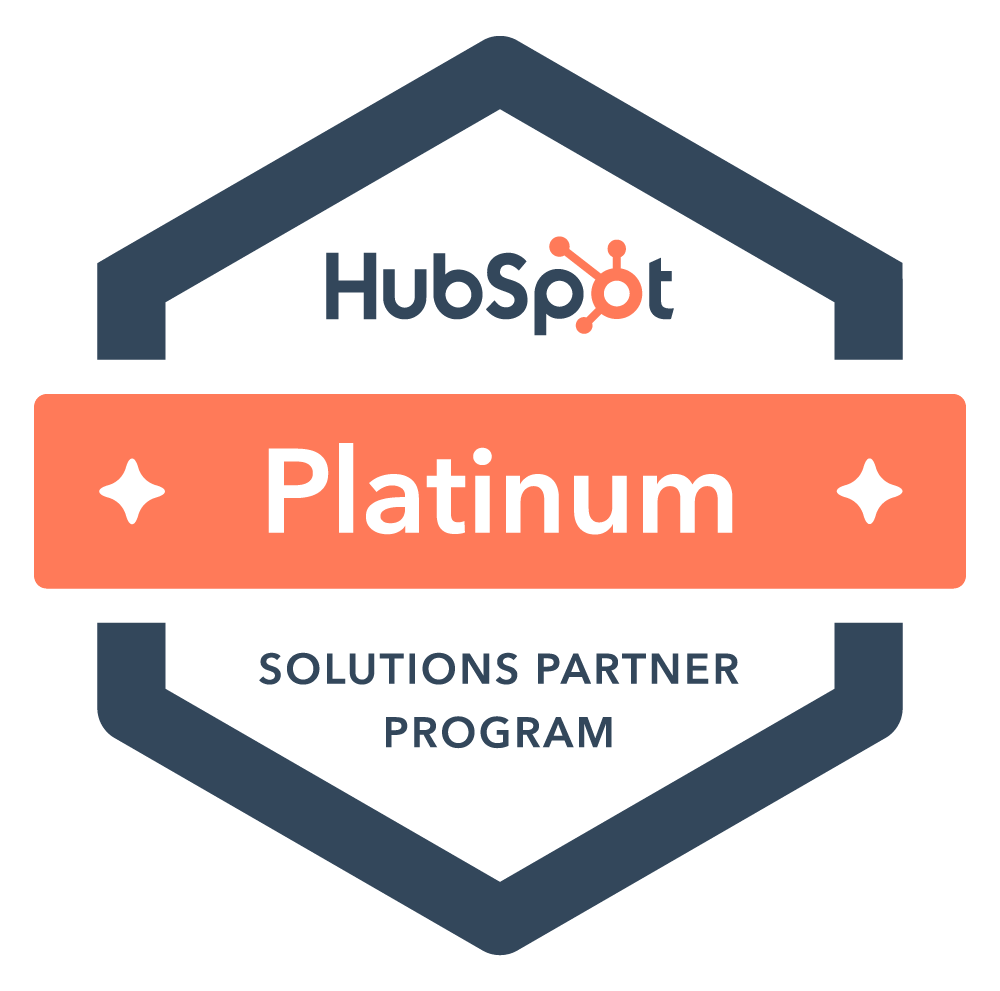Every business leverages on two fundamental marketing techniques in their operation: inbound marketing and outbound marketing.
Inbound marketing involves attracting and engaging new clients through quality content (e.g. blog posts), establishing a social media presence, using SEO to rank up the company website and more.
Outbound marketing on the other hand, is a more traditional form of marketing. Methods such as television ads to company calls and cold emails are a part of outbound marketing.
Both of these techniques have its benefits and drawbacks. Let's find out more about the difference between inbound vs outbound marketing:

1. Communication style
Inbound marketing uses a permissive style of communication. A company following this technique will only contact you through calls/emails/messages if you’ve previously interacted with their product or website beforehand. You will have the freedom to say no to communication (if you’d rather not be bothered).
Outbound marketing on the other hand, is interruptive. You may be unfamiliar with the products of this business and they might still be sending promotional content to you. Calls from telemarketing companies, for example, may interrupt your work and eventually could feel like spam.
2. Reader Interaction
Companies that support inbound marketing prepare contents to draw in their intended readers. For example, a website selling Marvel merchandise like the gauntlet of Thanos or Thor’s hammer will probably create an infographic featuring fun facts of the Avenger franchise. This will attract leads who may eventually be interested in buying the merchandise from the website. Inbound marketing companies strive to draw in the right niche of buyers who would be interested in buying from them.
Outbound marketing simply targets everyone. Strategies like putting up billboards or handing out leaflets are aimed at the whole market regardless of preference. The downside of this is that consumers may become annoyed at the promotion if they’re not interested and it may be too generic to appeal to the right target audience.
3. One way vs two way communication
Two-way communication is highly emphasised for inbound marketing. The company analyses the data generated by users, either through survey, poll or interactions with the company’s content and incorporates them into their strategy. In this way, the company has a better chance of making an impact on the target audience by understanding their needs and pain points.
Outbound marketing is just based on the company’s thoughts and not the consumers; the communication here is one way since it doesn’t involve the consumer’s input.
4. Content value
The content made in inbound marketing techniques is honed again and again so that it’s of the highest quality, meaningful to the target audience, enjoyable to read and provides sufficient educational value. A consumer who is wondering what kind of laptop to buy would greatly benefit from a comparison content. Drawing readers in to a website in this way is essentially inbound marketing.
Generating helpful or meaningful content is not the main focus of outbound marketing; Hence, the target audience sees little value in advertisements.
5. Audience attraction method
When using inbound marketing, you are laying down the foundation to invite the target audience to your website or platform. By consistently publishing valuable and helpful content and continuously optimising it, your target audience and customers will return to your website regularly, hungry for content.
Outbound marketing is quite the opposite; it overtly seeks new audience. It requires constant effort to capture audiences and tries hard to close the sale.
6. Natural Habitat
The natural habitat for inbound marketing includes search engines, blogs, emails, videos, social media, podcasts, infographics, referrals from another website and more. The content created by the company is heavily concentrated based on what the target audience wants.
Traditional outbound marketing usually takes place in forms of printed or mass adverts such as leaflets, radio and television commercials, billboards/banners advertisements.
7. Specific or general target audience
The content generated through inbound marketing prioritises the target audience’s wants, needs and pain points. They are not made to target everyone. Instead, it is catered to attract a specific type of reader and to nurture that relationship. It uses the Buyer Persona to target relevant leads and customers.
Outbound marketing aims to push their messaging to as many audiences as possible, regardless of their interest in the product or service.
Quick Read: What is a Buyer Persona?
8. Content’s main focus
The content written using inbound marketing methodology is directed at the consumer’s needs. From the topic to the tone, every single part of the writing style is composed with the desire of the target audience in mind; there is less focus on the product itself.
Conversely, content for outbound marketing focuses entirely on the product or service, such as its features and usages, disregarding consumer’s inputs.
9. Content shelf life
Inbound marketing takes a considerable amount of patience and effort to start, but the end result can be seen in the long-term. Content created through inbound have a longer shelf life, especially evergreen content. You can generate leads from the same posts with virtually no time limit.
However, the promotional materials for outbound marketing have a short shelf life. For example, adverts can only be displayed for a fixed amount of time before you have to renew the contract, pay a fee, maintain wear and tear, and so on.
10. Content consumption experience
Consuming content generated through inbound marketing feels uninterrupted and seamless. You won’t notice any obvious pushy messages since inbound content is made to fit into daily content consumption.
In outbound marketing, advertisements such as pop-up ads disrupt the reader’s learning and content consumption process. If there's too much disruption, it can annoy readers and drive them away.
11. Long term ROI
Once your amazing content is published, it will continuously generate traffic leads for the business. Over time, this number will continue to grow. Moreover, as happy customers share their experience on social media and through word-of-mouth, it generates an even greater fan base for the company. Growth for inbound marketing is automatic and exponential.
Its predecessor however, requires constant attention to obtain leads. Relationships with existing clients quickly extinguish after purchase, especially when sales teams forget to carry out a follow-up.
12. User experience
Through inbound marketing, customers have the freedom to choose the type of content and the time they would like to consume it. Nothing is thrust upon them and they can pick promotional materials entirely from their choice.
This factor is absent from outbound marketing which simply shoves promotional materials upon everyone in the target audience, leading to a good portion of people tuning out of the ads.
13. Growth and adaptability
With two-way communication happening between buyer and seller, long term relations and growth on both sides can happen seamlessly with inbound marketing. Leads are nurtured and cultivated into marketing/sales qualified leads (MQL/SQL) through the whole inbound marketing process.
Unfortunately, this positive development doesn't usually happen in outbound marketing techniques; the message broadcasted is set in stone, leaving no room for development.
In Conclusion
As for inbound marketing vs outbound marketing, the scales definitely tip in favour of the inbound marketing strategy. However, it is important to remember that adopting even the best of strategies requires considerable amounts of thought and preparation beforehand. Outbound has its own benefits and can be used to supplement inbound strategy, but a company who employs mainly inbound techniques is more likely to see impactful results in the digital age.
Will you be leveraging the inbound marketing methodology into your business?




